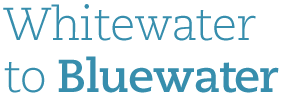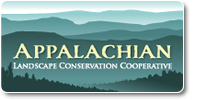Creating Oyster Niche Structures through Restoration Using Crab Traps
| Project Start Date | |
|---|---|
| Project Leader | |
| Organization |
Abandoned crab traps are a prevalent form of marine debris on South Carolina and other states’ scenic coastal shorelines, detracting from their natural beauty and posing an ecological threat. This project, lead by a team of researchers with the South Carolina Department of Natural Resources (SCDNR), led by Associate Marine Scientist, Dr. Peter Kingsley-Smith, is a progressive way to use abandoned and unwanted crab traps to create new and thriving oyster reef habitat with funding from the SARP/NOAA Community-based Restoration Program (CRP), SCDNR.

- Experimental oyster reef at Dawho Cut, South Carolina. The crab traps were deployed as substrate on April 5th 2011 and are shown here photographed on November 10th 2011, approximately 7 months later. Photo credit: Benjamin Stone, SCDNR.

- Close-up photograph of the demonstration reef at Bears Bluff, Wadmalaw Island, South Carolina illustrating the high recruitment and growth rates of oysters on the concrete-coated crab traps. This particular reef was constructed and monitored in collaboration with USFWS volunteers at the National Fish Hatchery. The crab traps for this reef were deployed on May 2nd 2011 and the reef is shown here on July 3rd 2012, approximately 14 months after construction. Photo credit: Benjamin Stone, SCDNR.
Abandoned crab traps are a prevalent form of marine debris on South Carolina and other states’ scenic coastal shorelines, detracting from their natural beauty and posing an ecological threat to many species of marine and estuarine wildlife. In 2009, a progressive team of researchers
with the South Carolina Department of Natural Resources (SCDNR), led by Associate Marine Scientist, Dr. Peter Kingsley-Smith, developed a project to revitalize abandoned and unwanted crab traps to create new and thriving oyster reef habitat. With funding from the SARP/NOAA Community-based Restoration Program (CRP), SCDNR gathered valuable information on the abundance and distribution of abandoned crab traps in the coastal waters of South Carolina. To accomplish this, researchers posted educational flyers to: 1) inform the general public about
the negative impacts of abandoned crab traps on the environment; 2) raise awareness about the project; 3) recruit survey participants (http://www.dnr.sc.gov/marine/crabtraps); and 4) obtain unwanted traps. As a result of these efforts, which are ongoing, a total of 755 crab traps have been collected, with many of these traps having already been used as oyster reef substrate as part of this SARP/NOAA grant and a concurrent State Wildlife Grant-funded project. Plans are also in place to use some of these traps as substrate for reef-building in 2013 and 2014 as part of a recently awarded grant to the Marine Resources Division through the National Estuarine Research Reserves’ Science Collaborative. Of all the traps collected so far, 561 were donated by commercial fishermen and the general public. These traps would likely otherwise have been destined for the landfill. The remaining 194 traps were clearly abandoned in the environment (i.e., lacked identifying floats, were high and dry at low tide) and were recovered by staff from the SCDNR or in collaboration with staff from the Yawkey Wildlife Management Area, Bears Bluff National Fish Hatchery on Wadmalaw Island, and Botany Bay Plantation on Edisto Island.
By the end of the SARP/NOAA project in December 2012, 285 revitalized (i.e., vents closed and coated in concrete to enhance oyster settlement) crab traps had been deployed as substrate by SCDNR staff to support oyster reef development. These traps were arranged either as “experimental reefs” or “demonstration reefs”. The experimental reefs, constructed from March – April 2011, were comprised of replicated, individual traps intended to facilitate the collection of data on oyster reef “footprints” (i.e., percent live cover), oyster density per square meter, and oyster shell heights. The experimental reefs were created within 6 different water bodies (Ashley River, Charleston Harbor, Dawhoo River, Leadenwah Creek, New Cut, and Stono River) with three sub-sites each consisting of 8 traps established in each water body. The demonstration reefs, constructed in April – May 2011, were sited in areas that were easily accessible to volunteers who were integral to the finfish sampling events while being educated as to the ecological value of oyster reef habitat. These demonstration reefs were established as contiguous arrangements of crab traps in a checkerboard pattern to increase both the amount of surface area available for the recruitment of larval oysters and the 3-dimensional structural complexity of the reef which is known to be important for supporting high species diversity. Of particular significance in terms of habitat restoration, this approach of using crab traps to build reefs was effectively used in areas dominated by “pluff mud”. These areas are largely devoid of hard substrate for oyster recruitment and do not lend themselves to the more traditional methods of habitat restoration and enhancement that have been widely used in South Carolina.
By the end of the SARP/NOAA project in December 2012, 285 revitalized (i.e., vents closed and coated in concrete to enhance oyster settlement) crab traps had been deployed as substrate by SCDNR staff to support oyster reef development. These traps were arranged either as “experimental reefs” or “demonstration reefs”. The experimental reefs, constructed from March – April 2011, were comprised of replicated, individual traps intended to facilitate the collection of data on oyster reef “footprints” (i.e., percent live cover), oyster density per square meter, and oyster shell heights. The experimental reefs were created within 6 different waterbodies (Ashley River, Charleston Harbor, Dawhoo River, Leadenwah Creek, New Cut, and Stono River) with three sub-sites each consisting of 8 traps established in each water body.The demonstration reefs, constructed in April – May 2011, were sited in areas that were easily accessible to volunteers who were integral to the finfish sampling events while being educated as to the ecological value of oyster reef habitat. These demonstration reefs were established as contiguous arrangements of crab traps in a checkerboard pattern to increase both the amount of surface area available for the recruitment of larval oysters and the 3-dimensional structural complexity of the reef which is known to be important for supporting high species diversity.
Complete
Oyster reef construction using crab traps.
Associated Locations
| Town | zip code | county | state | congressional dist |
|---|
Barriers
| Name of barrier | Latitude | Longitude | FONS ID | FIS Project ID | FWS Acc. # |
|---|
Document Actions






